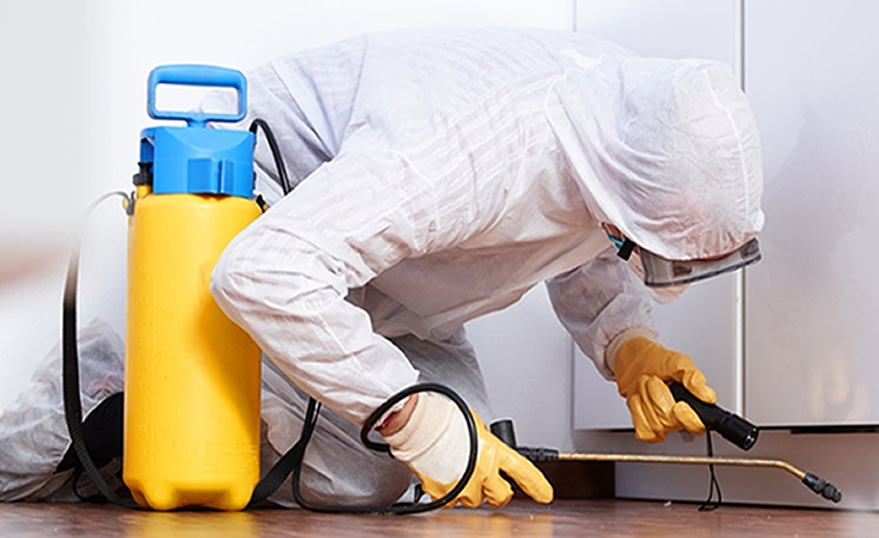Efficient Bed Bug Treatment: Eliminate Infestations Securely!
Wiki Article
Expert Pest Control Techniques for Long-Term Outcomes
Expert bug control strategies encapsulate a thorough technique that begins with a detailed evaluation and evaluation, complied with by precise insect recognition to understand their habits patterns. The application of Integrated Insect Monitoring (IPM) concepts, coupled with eco-conscious therapies, forms the cornerstone of lasting parasite eradication.Examination and Analysis
Upon getting in a property for bug control solutions, the first action is a thorough inspection and analysis to determine the degree of the infestation and determine one of the most efficient treatment plan. Professional parasite control professionals are educated to carefully examine the properties, trying to find signs of parasite task such as droppings, nibble marks, nests, or any kind of architectural damage. They will certainly also analyze the problems that may be bring in insects, such as food resources, water leaks, or access points.
Bug Recognition and Actions

Furthermore, recognizing the habits of the determined insect is key to applying reliable control steps. As an example, recognizing where bugs nest, what they feed upon, and their activity patterns can aid pest control experts devise approaches to eliminate them efficiently. Some bugs may be nighttime, while others are much more energetic during the day. This knowledge permits the application of treatments at ideal times termite identification for maximum performance.
Integrated Pest Administration (IPM)
Integrated Parasite Management (IPM) approaches integrate multiple methods to regulate and prevent insect problems in a sustainable and ecologically pleasant fashion. exterminator near me. By integrating techniques such as organic control, environment manipulation, adjustment of cultural techniques, and using resistant varieties, IPM aims to lessen the usage of chemical pesticidesAmong the key principles of IPM is the emphasis on prevention. This positive technique involves tracking insect populations on a regular basis to find any kind of potential concerns prior to they escalate. By determining bug issues beforehand, pest control actions can be implemented swiftly and effectively.
Furthermore, IPM promotes the use of non-toxic pest control methods whenever feasible. This can consist of using all-natural killers of the insects, introducing useful bugs, or using pheromones to disrupt breeding patterns. By lowering dependence on chemical pesticides, IPM not only safeguards the environment but additionally aids preserve a balance in the ecosystem.
Environmentally-Friendly Therapies
Executing eco-conscious strategies in bug control procedures can successfully address invasions while focusing on environmental sustainability. Environmentally-friendly therapies focus on lessening the impact of insect control approaches on communities, non-target microorganisms, and human health.One more trick aspect of read this post here environmentally-friendly therapies is making use of organic and naturally degradable items that break down rapidly without leaving unsafe residues in the atmosphere. Agricultural insecticides stemmed from plants like chrysanthemums or neem supply effective insect control while posturing minimal risk to non-target types. In addition, employing methods like warm therapies or scent catches can target specific insects with precision, minimizing the total ecological impact of pest control methods.
Ongoing Monitoring and Maintenance
Routine inspections by skilled experts are essential to determine any indicators of insect task, examine the effectiveness of previous therapies, and make adjustments to the bug control plan as required. By keeping track of parasite populations over time, parasite control professionals can track fads, expect possible issues, and apply preventive actions to reduce the threat of future infestations.
In addition to tracking, upkeep techniques are vital for long-term parasite control success. This includes executing appropriate cleanliness procedures to remove possible food and water resources for parasites, sealing off entry points to avoid bugs from going into the facilities, and resolving any kind of architectural concerns that can promote parasite problems (Exterminator DC). By integrating continuous tracking and maintenance into an incorporated parasite monitoring approach, organizations can make certain a pest-free atmosphere and secure their property versus expensive damage and health risks
Verdict
Finally, using professional pest control strategies such as thorough evaluation bedbugs and evaluation, accurate bug recognition and understanding of their habits, incorporated insect management strategies, environmentally-friendly therapies, and continuous monitoring and upkeep are crucial for accomplishing long-term lead to bug control. By executing these approaches, people can effectively take care of insect problems and preserve a pest-free atmosphere in a sustainable manner.Report this wiki page